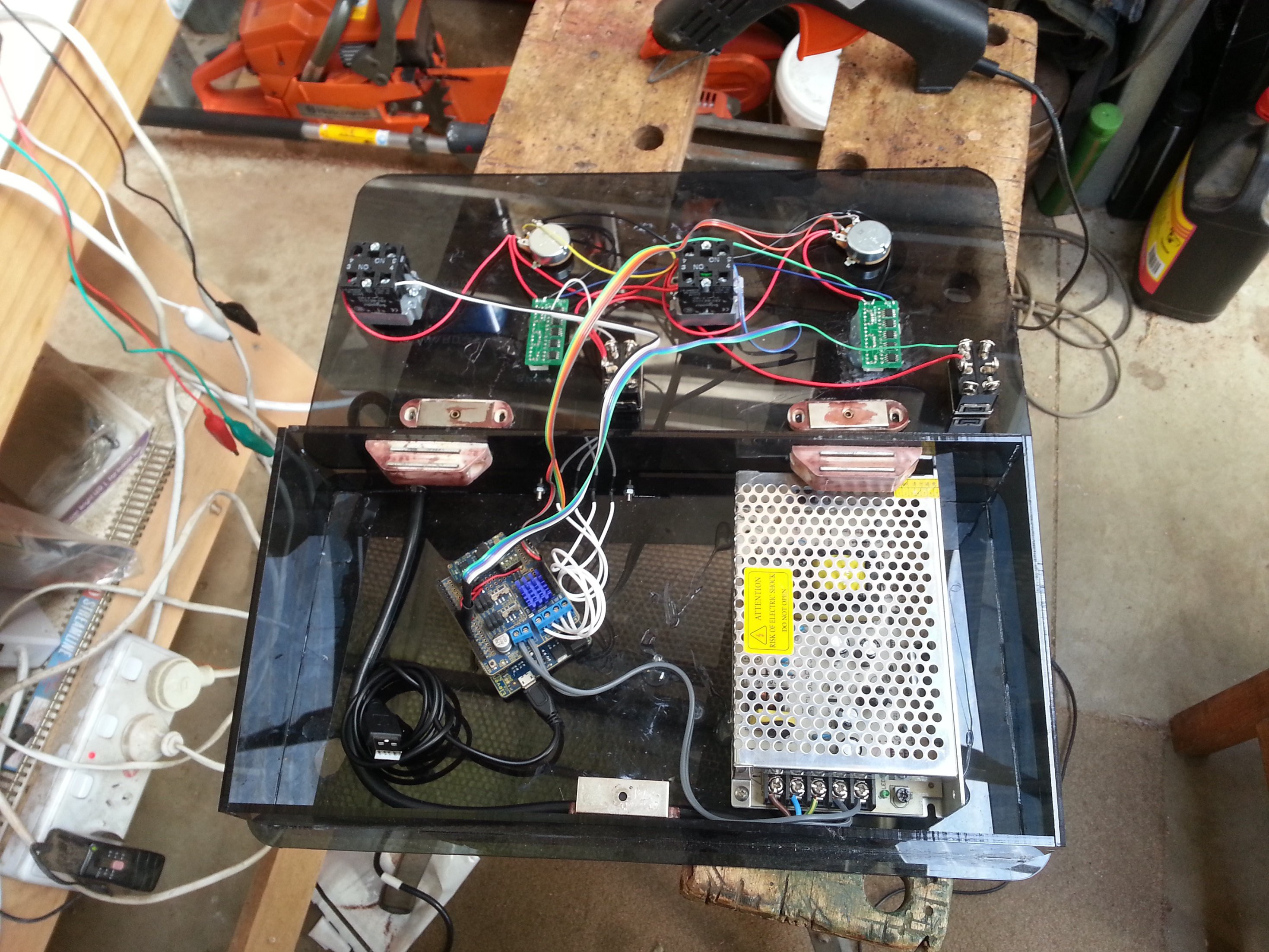-
More Volts = More Win
09/11/2014 at 08:44 • 0 commentsWell, it's been a long while since my last update , but better late than never.
![]()
As you can see, there's been a bit of an upgrade to the power supply. This one reliably puts out 14.5 volts, right in the middle of my intended range.
This range works well for both Dads newer trains and his older ones, although the older ones still aren't as fast as they were, they are much closer to scale speed.
Next project, A control system for his lights, gates and points.
You can see the controller in action at https://www.youtube.com/watch?v=5bwM_wmyQnE&list=UUvvi5kSe1kwCc-78wka9uHw -
Success, and a bit of failure
04/24/2014 at 04:04 • 1 commentWhile I'm posting this at the same time as the rest of the project, I felt it deserved it's own log entry.
Dad's new trains worked great with this controller. They were slightly slower, but the acceleration effects worked and they still had the torque they needed. We needed to bump the speed up to break the initial rolling resistance before setting them to a slower setting, but that was expected.
The older trains though, they were very slow. Needed to set them to full power to get anything out of them. With the older controllers they HAMMERED around the track so we decided to do some digging.
The older controllers have the text "OUTPUT: DC 11.6v, 0.36A" on the case.
First we checked the current with a multimeter in series. Fortunately, both the old and new controllers outputted around 0.36A, indicating that was about what the train should be drawing.
Then we checked the voltage, and what a surprise there.
The new controller outputs 12V in pwm. It is always at 12V, no drops, no spikes, boring.
The old controller is all over the place. At full power it was consistently at 13.5V, but anything less than that and it fluctuated between 3V and 24V.
So, from here I'm going to try a higher rated power source. The system can take up to 28V, but I think I'll go for 14 to 15V.
Model Train Controller
A digital model train controller for those who still want an analog world.
 John Spencer
John Spencer